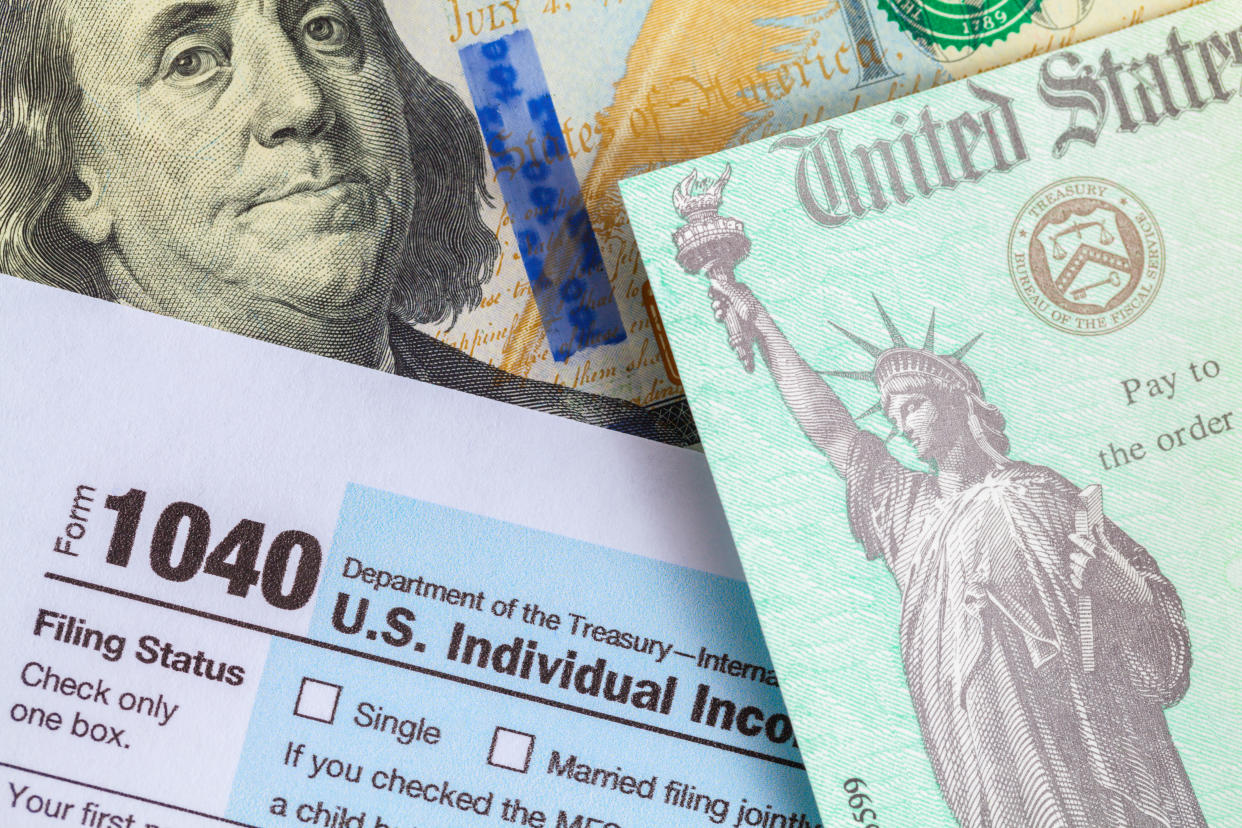Filing taxes is rarely high on anyone’s list of favorite things to do. Preparation, though, can cut out some of the pain and the last-minute scramble to file your taxes on time.
While tax planning works better as a year-round process, there are steps you can take now to get your finances ready for filing in April.
“Nothing beats the value of organization when it comes to filing taxes,” said Tim Bauer, a certified financial planner and founder of Evergreen Financial Group. “If you haven’t yet done any organizing for the year, it’s not too late. Even just a few hours one or two days now will pay off at tax time.”
Here’s what you can do.
Create a folder for your forms
Half the battle of filing taxes is making sure you have all the right forms you need. W-2s from employers, 1099-INTs from the bank, and 1099-NECs from contract work all start showing up in late January or early February.
Create a folder to gather all these documents in one place as they come in the mail. If you get these forms electronically, immediately download them and save them with other tax documents that you’ll need.
You can also focus on digitizing more of your documents.
“Digital records are often easier for people to keep track of rather than physical papers and will help when you need to send documents to an accountant or upload them into tax prep software,” said Helena Swyter, a certified public accountant and founder of Sweeter CPA.
Check last year’s tax return
You’re not truly starting from scratch every tax year. Looking at last year’s tax return is a great way to find out what you need to do this year. You can also use it it to make sure you’re not missing anything important such as:
Interest and dividends: Last year’s return should show you who sent you tax forms such as 1099s in the past. That can help ensure you have those same forms on hand this year.
Charitable deductions: You might not always get a receipt for every charitable donation you make. If you haven’t kept close track, canceled checks or bank account statements can be helpful, but so can last year’s tax return if you tend to donate to the same charities.
Review your withholdings
If you got a huge tax bill or a huge tax refund last year, and you’d prefer to keep things more even-keeled, you might want to adjust your withholdings. That means increasing or lowering how much taxes are taken out of each paycheck. You can make those changes at any time on a W-4 form.
“Married couples filing jointly should look at withholdings and the W-4 form together to make sure enough is being withheld across multiple jobs,” Swyter said.
If you’re self-employed or make money from a side gig or as a contractor worker, you’re responsible for your own withholdings. You can use the IRS withholding estimator tool to see if you’re on track.
Wrangle your receipts
If you itemize your deductions, getting your receipts in order might be the most painful part of doing your taxes. Even if you’re well organized, it can still be a struggle.
If you haven’t already, start organizing the types of your deductions by category such as medical expenses, charitable donations or taxes. This can also help you ensure that you meet the requirements for each deduction. Use an electronic spreadsheet or an app to track your information. Once you have a good handle on your deductions, you can either email that information to your tax pro or have it all ready to go to enter in your tax software yourself, Baurer said.
Check your tax deductions/credits
There have been several changes or additions to tax credits and deductions in recent years, especially in light of the pandemic. Do some research now to see which credits or tax deductions you qualify for and what you need to do to get them. (Here is the IRS list of tax credits and deductions.)
Recently, some common credits and deductions have become even more valuable, including:
Charitable deductions: Single filers can now deduct up to $300 and married filers $600 for cash donations to charity. You can do that even if you already take the standard deduction, Bauer said, so you don’t have to itemize all your donations if they fall under that amount.
Earned Income Tax Credit (EITC): The American Rescue Plan expanded the Earned Income Tax Credit so some people may be newly eligible this year. This credit is typically aimed at people with low to moderate income.
“This year, the credit is bigger and there’s a wider income range, so double-check to see if you qualify before you file,” said Justin Pritchard, a certified financial planner with Approach Financial. In the past, this refundable tax credit was most beneficial for people with kids, but in 2021, people without children will get about three times more than they once did, Pritchard said.
Child and Dependent Care Credit: The standard Child and Dependent Care Credit has also been expanded through the American Rescue Plan. This is a credit you can get based on a percentage of your childcare expenses such as daycare, aftercare, or preschool. Whether you qualify depends on factors like your child’s age (they have to be younger than 13) and your adjusted gross income.
Even if you don’t do much to get organized for this year’s taxes, there’s always time to prepare for the next tax-filing season.
“If you're not already using an expense tracking app or product, explore those programs for next year,” Pritchard said. “That makes it easy to categorize expenses automatically, and you can quickly view costs and gather the details you need at tax time.”
Source: Read Full Article








